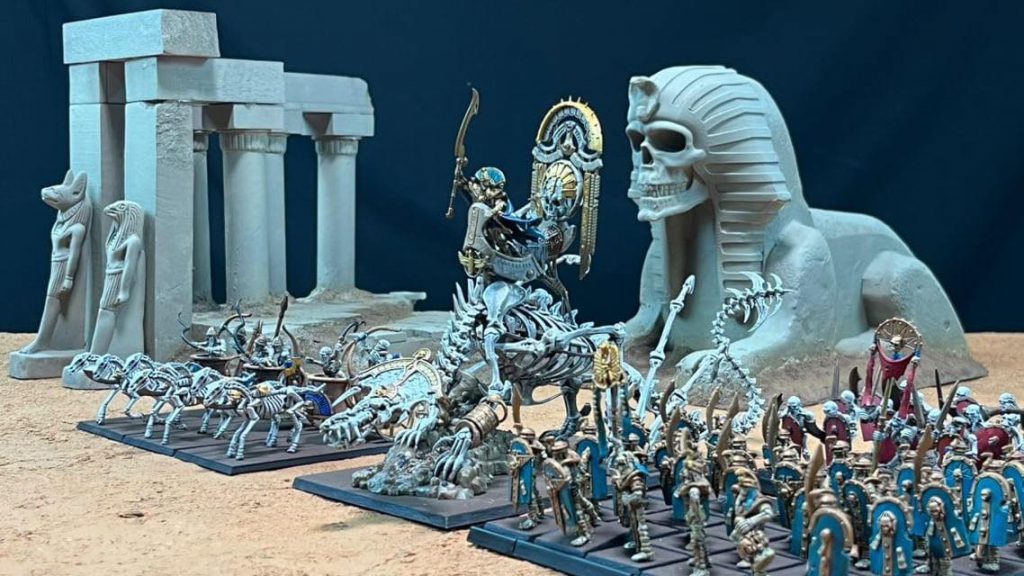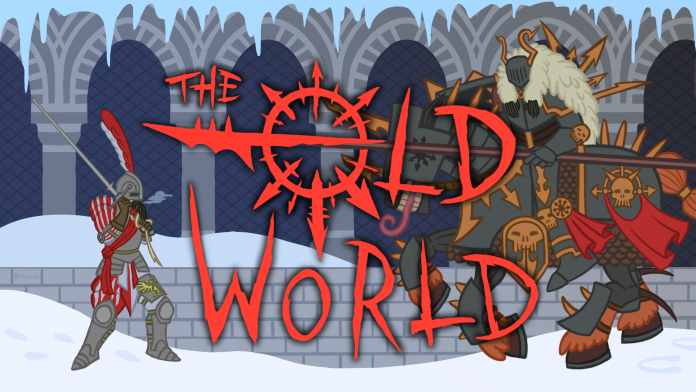This is the beginning of what will likely be a series all about rules interactions in the Old World. I wanted to call this series “Read Your Rulebook” but thought better of that. Mostly.
Today I’m looking at the two most deadly rules in the game, how they work, what they work against, and some weird interactions with mounts that seem to crop up online as questions fairly often.
Throughout the game you’ll find units or heroes that come with these rules or magical items that grant them as abilities. Regardless of how you come about these rules it’s good to know exactly how they work, how best to use them, and most importantly how to avoid being hit by them.
Killing Blow
“If a model with this special rule rolls a natural 6 when making a roll To Wound for an attack made in combat, it has struck a ‘Killing Blow.’ Enemy models whose troop type is ‘infantry’ or ‘cavalry’ are not permitted an armour or Regeneration save (see page 176) against a Killing Blow (Ward saves can be attempted as normal). If an enemy model whose troop type is ‘infantry’ or ‘cavalry’ suffers an unsaved wound from a Killing Blow, it loses all of its remaining Wounds.
“Note that if an attack wounds automatically, this special rule cannot be used.” – page 172 Rulebook
In The Old World both “infantry” and “cavalry” are unit types full of sub-types including “monstrous infantry” and “monstrous cavalry.” This might catch out veterans returning to the game as in some previous editions only your basic, normal, infantry would be affected by this. No longer! Now trolls, giant cave squigs, dragon ogres, tree kin, gyrocopters, pegasus (all kinds), and more can and will be removed if they suffer a single Killing Blow wound!
Skipping past all armour and regen is huge, too, as in many cases the best line of defence a model will have is a good armour save and sometime some form of regeneration. A very good reason to make sure your all-important character has a Ward save, the only kind of save allowed!

Monster Slayer
“If a model with this special rule rolls a natural 6 when making a roll To Wound for an attack made in combat, it has struck a ‘Monster Slaying Blow.’ Enemy models whose troop type is ‘monster’ are not permitted an armour or Regeneration save (see page 176) against a Monster Slaying Blow (Ward saves can be attempted as normal). If an enemy model whose troop type is ‘monster’ suffers an unsaved wound from a Monster Slaying Blow, it loses all of its remaining Wounds.
Note that if an attack wounds automatically, this special rule cannot be used.” – page 173 Rulebook
Very similar to the above, Killing Blow, but for monsters. The “monster” unit type includes “monstrous creatures and “behemoths.” The former are generally single monster minis like giants, tomb scorpions, or gyromombers; the latter are ridden mounts such as warsphinxes, imperial griffons, and many dragons. In either case these are very often quite quick-moving units and the best thing you can do with them is to keep them away from any Monster Slayer in the enemy army! Which of course often easier said than done.
Due to how split-profiles work in Old World a character that’s normally infantry mounted on top of a Behemoth mount will be immune to Killing Blow but will fall victim to Monster Slayer.
Howdahs and Warsphinxes
One very important thing to bring up however is the Howdah rule, as rare as that might be, and how it is treated like a chariot but is very importantly not a chariot. Tomb Kings players will be familiar with the Warsphinx which has the Howdah rule:
“To represent its howdah and crew, a behemoth with this special rule has a split profile and follows both the ‘Split Profile (Chariots)’ and ‘Firing Platform’ rules (see page 194). In all other respects, this model is a behemoth.” – page 171 Rulebook
The Warsphinx has a somewhat confusing sentence under it:
“Note that, because it has the Howdah special rule (and its own crew, which the character joins), a Khemrian Warsphinx is considered to be a chariot mount (as described in the Warhammer: the Old World rulebook), rather than a ridden monster.” – page 143 Ravening Hordes
An interpretation I’ve seen going around is that because of “considered to be a chariot mount” that a Warsphinx suddenly becomes immune to Monster Slayer. This is not the case. The unit type of a Warsphinx is still a Behemoth which falls under the Monster category, so is still affected by Monster Slayer. It’s not treated as a “ridden monster” which simply defines which split profile rules you use: Chariot, not Ridden Monster. In practice this really just means it will benefit from the Firing Platform rule so it can shoot and cast spells in 360 degree vision arc making it a prime candidate for the Ruby Ring of Ruin!

The Mighty Chariot
You may have noticed that throughout the above sections the only unit type not affected by either of these deadly rules are chariots. Both are simply immune to either effect, which makes a character able to ride a chariot one of the most reliably tough mounts in the game. That said, dropping a lot of points into something that can be easily targeted at range won’t always be your best bet either, artillery can still do multiple wounds per shot and other ranged attacks and spells can remove them! Infantry and cavalry characters (yes, even monstrous infantry/cavalry) are rather safe from ranged harm as long as they stick close to friendly units they can’t be targeted by ranged attacks.
Bring it Down!
Now that you know how to make the best use of your Killing Blow and Monster Slayer units go out and use them! Take down that dragon, remove those ranks of trolls and ogres, bring home victory!
Did something about this surprise you or did you learn something? Different to how your group has been playing it? Leave a comment below or email in to contact@goonhammer.com.


